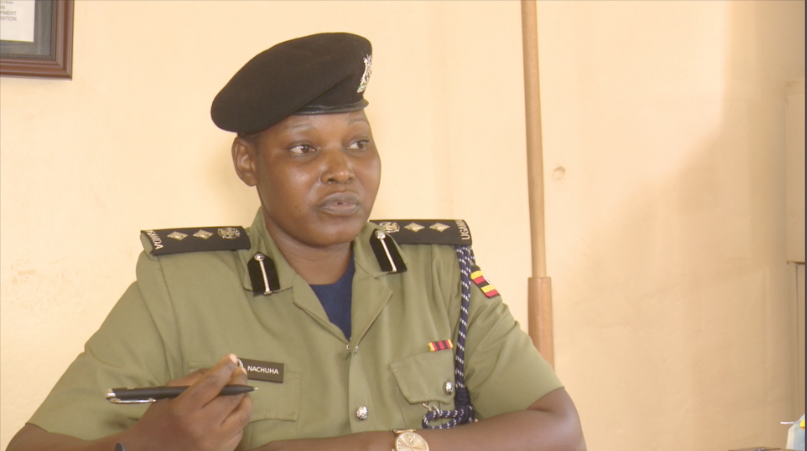Prime
Could Kiira power dam boat tragedy have been avoided?

A staff at Eskom points at a section of the dam where survivors were rescued after their boat capsized. PHOTO | ALEX ESAGALA
What you need to know:
- The head of Corporate Affairs at Eskom Uganda, Mr Emmanuel Njuki, said their diving requirements as per operations are well catered for and reinforced by a local contractor in Jinja when a need arises, and there are cameras available on site to monitor the entire site.
BY PHILIP WAFULA
Following a boat accident at Kiira dam on Sunday that left three people, including two from the same family and a tour guide dead, questions are being raised regarding the safety and how best such a tragedy could have be avoided.
The incident occurred at around 5pm when the boat experienced engine failure and was pushed to the dam, Eskom Uganda said in a s tatement.
The officer-in-charge of Nalufenya Police Station, Mr Samuel Lubega, on Monday confirmed the death of Ms Shakila Kaweesi, also known as Supa, while her husband Hassan Alwi, in his 50s and nine-year-old son, Jafalu Alwi, managed to survive.
The body of five-year-old Amira Alwi, their daughter, was on Tuesday also recovered in Bujagali, the Kiira regional police spokesman, Mr Abbey Ngako, said.
The guide, identified as Okudi, is reported to have jumped out of the boat after sensing that it was operating on ‘free float’ and ‘break-neck speed’.
The group is said to have set off from Rulu Fish pond farm in Jinja for a boat cruise.
Witness speaks
Mr Richard Drabe, a private guard attached to Pearl Security, who was overseeing security at Kiira dam, said he saw the boat bringing the family towards the Source of the Nile but as he beckoned them to stop, the water kept pushing them further.
“I told them to stop but they kept pleading with me not to shoot them, saying they are in danger. Once I heard that, I started raising the radio call, but unfortunately, the battery blacked out.
“I ran to the main gate and by the time I returned, they were reaching the point of entering the spillway. By this time, after about 10 minutes, they were no longer on the boat and when my colleagues saw the boy struggling, they rescued him, followed by his father,” Mr Drabe said.
Mr Drabe added that he saw a woman, who was carrying a baby fall into the water as a unknown man who was coming from behind in a canoe boat tried to rescue them in avain.
Key interventions by Eskom Uganda, was to immediately switch off the spilling to see if they could make any more rescues because when the boat engine failed, paddling was impossible and all the four occupants were forced to ‘paddle’ using their hands until they went through the spillway, including the boat.
The basic purpose of the spillway is to allow water to move from one part of the dam to another, Mr Philip Davis Malaba, an engineer at Electro-Mechanical Consultant, said on Wednesday.
“A dam does many things; apart from producing power, it controls irrigation, overflow of the lake and spillways are used to reduce the water of the lake,” Mr Malaba said.
He said when a boat goes through a spillway, it is ‘threaded’ because of the power of the water.
“A spillway is narrow, so you are forcing a lot of water through a narrow passage so the strength of that water is crazy.
“The speed or weight at which the water comes depends on how many spillways are there and the depth of the water. Have you seen the force with which a tsunami throws houses, cars and trees? The power of water through a spillway is like a car at high speed,” Mr Malaba said.
Ms Thozama Gangi, the Eskom Uganda managing director, said there are three spillways at Kiira Power Station and six sluice gates at Nalubaale Power Station (NPS), at the dam.

Shakira Kaweesi, also known as Supa, and five-year-old Amira Alwi, died in the boat accident at Kiira dam on Sunday. PHOTO | COURTESY
“On Sunday, there were three spillways open and the sluice gates at NPS were closed, 519 cumecs were going through the turbines while 1,481 cumecs were discharged through the spillways at Kiira so as to meet the approved 2000 cumecs.
“The water from the spillways moves at roughly 10 metres per second. It must be highlighted that this is not the speed of the water everywhere on the river, but specifically in the spillways, as the speed of water is a function of the area, the water has to move through and the volume of water moving through, as such as the volume narrows, the speed increases,” Ms Gangi said.
She added: “We have had a number of instances when items such as boats, islands and fish cages have come to the plant, and these have been washed through the spillways. Water has a lot of force in general and going through a spillway would be similar to falling through a waterfall.”
The past three years have seen an unprecedented rise in water levels that partly explains why the spill gates that used to gush water were no longer working.
It is estimated that Lake Victoria discharges up to 300 million cubic metres of water into River Nile per day which has to be harvested at the dam and later released through turbines.
Mr Feni Luvuyo, the technical director at Eskom Uganda, in an earlier interview, said it was the first time the lake levels were this high since the start of the concession.
“We haven’t been spilling water because it wasn’t necessary and such an incident has never happened,” he said.
Mr Fred Obura, a tour guide with 15 years’ experience, said local boat captains at the Source of River Nile know the areas and channels through which it diverts to the spill gates and at which the water moves very fast, adding that there is a ‘black spot’ at the old bridge (railway line).
Mr Obura said when an engine goes off, the water takes you towards the dam.
“A lot of water passes through the spillway; therefore if you happen to pass through it, you are suppressed under a volume of water which is running at a very high speed,” he said.
A local boat captain, who declined to be named so that he speaks freely, said Eskom Uganda should have put a demarcation around this point, warning people not to go beyond certain metres towards the dam.
SAFETY ADDRESSED
Ms Thozama Gangi, the Eskom Uganda managing director, has, however, said in the peninsular, there are Uganda People’s Defence Force (UPDF) marines, who always patrol and make sure that people do not come near the power plant as part of several precautionary measures Eskom Uganda has put in place to ensure safety.
“There is clear signage that one should not go near the dam from the peninsula, where the UPDF keeps guard over the waters. The UPDF is also there to deter people and boats from coming near the dam, and to actively prevent them from going near the dam.
“The fishermen know that the spilling exercise is happening, and they are also clear on which are the go and no-go areas as Eskom Uganda has continuous engagements with them. Key to note is that the spilling started in March 2020 and has never stopped,” she said.
Ms Gangi added: “There is a fence around the complex to prevent people from accessing the complex, a barrier for trapping hyacinth and not for stopping boats from getting through and UPDF marine to detect and deter unauthorised access to the complex.”There have been calls for Eskom Uganda to have divers of their own, with allegations swirling that they use divers from Entebbe and the marine unit of the UPDF.
More calls are being suggested for Eskom Uganda to intensify its surveillance around the dam to enable them see any danger ahead and respond; and also have well-trained rescuers and more personal boats to patrol the waters.
The head of Corporate Affairs at Eskom Uganda, Mr Emmanuel Njuki, said their diving requirements as per operations are well catered for and reinforced by a local contractor in Jinja when a need arises, and there are cameras available on site to monitor the entire site.




